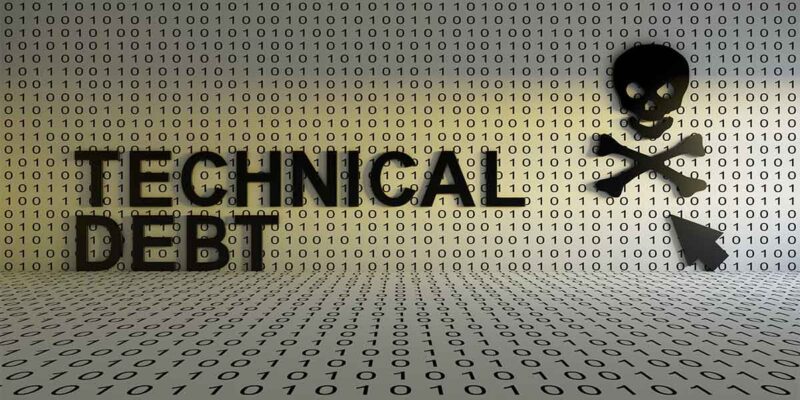Avoiding Technical Debt

A few months ago, I wrote a piece on technical debt and how understanding the concept and using the language may be helpful in communicating your needs to the decision-makers on your campus. In late March, I was able to join in a LAVNCH session to discuss technical debt in more detail. It was a great session, and like any great discussion should do, it left me thinking.
A particularly great question from Steph Beckett was “how do you define something as being current?” The question is important because it referenced a bigger idea than just having to “update old technology.” When we talk about technical debt, we are talking about putting off replacement or upgrades that will continue to increase, often exponentially, in costs. This is an important distinction than just “keeping stuff up to date.” Consider the difference between these two approaches:
- I have to replace that set of devices because they are five years old.
- I have to upgrade that set of devices over the next two years at a total cost of $50,000. If we don’t do this, there is a good chance a piece of equipment dies and we will be forced to stop using the classroom, or have an emergency spend of $75,000 to put a bandaid on the problem.
It is clear which approach is more likely to gain traction, and shows a forward thinking, strategic approach to upgrades and maintenance. Since this is such a crucial area of the work we do, I thought looking at the answers to these questions in more detail would be great for this month.
In the session, I gave three ways to determine if you are heading into technical debt. First, is the equipment still supported by software and hardware updates. Another way of expressing this may be, does the manufacturer consider the equipment to be end of life? Software updates are necessary for several reasons, but in terms of accruing technical debt, they are particularly important in terms of security and upgrading of other pieces of equipment in your space. Security is an obvious issue with all of our equipment being on a network. AV companies continue to get better and better about issuing updates that are solely about patching security holes. If you are not getting those updates because the product is no longer supported, and there is a breach your debt will accrue very quickly because your solution will be to turn all that equipment off and replace it immediately. A second reason that many devices continue to get software and firmware updates is so they can work with other new products that come out on the market. If your main control system for a room has not had a software update available for years, and you need to replace a projector, but it has protocols the control system can not handle, your debt has come due. Instead of a simple two-hour replacement, you are faced with a complete system overhaul.
A second thing to watch out for is whether the product is still under warranty, or at the very least whether it can be fixed. A lack of being under warranty alone does not mean a product is accruing debt as we know that warranties will not cover the entire expected life of a product. A switcher may have a year warranty on it, yet we fully expect that to last longer than a single year. However, if the company that made that switcher will not work on the equipment anymore, or does not sell cards, inserts, power supplies, etc. for the switcher, then you need to consider that your technical debt is growing rapidly.
Finally, we have to determine that if a piece of equipment stopped working today, could we replace it with something that is currently on the market without extra infrastructure or replacing other equipment? Take any piece of equipment in your systems and think about what it would take to replace that equipment. Would something that is currently on the market go in place of it, without you having to change infrastructure? When considering infrastructure that includes power, data, physical size and space and of course the particular cabling that is between your devices. What about having to replace other hardware. While many of us may roll our eyes at this, I bet there are schools out there with RGHV, DVI and proprietary cables running in their walls. I am confident that people have closets and systems that do not have networking running to them. Modern systems on the marketplace need modern infrastructure to function. Not keeping the infrastructure up to date is kind of like getting an adjustable rate mortgage in 2020 and then having to pay that mortgage in 2024.
Toward the ended of the session we discussed how there is only one way to make sure that you are staying on top of all three of these issues and that is with a good inventory, with good data. AV people are great at customer support and always keeping things running — we are not always so great at creating and maintaining a strong inventory. If you do not know what you have on campus, you will not be able to tell the story of technical debt and how to avoid it. Next month we will look at some thoughts about inventory management.




